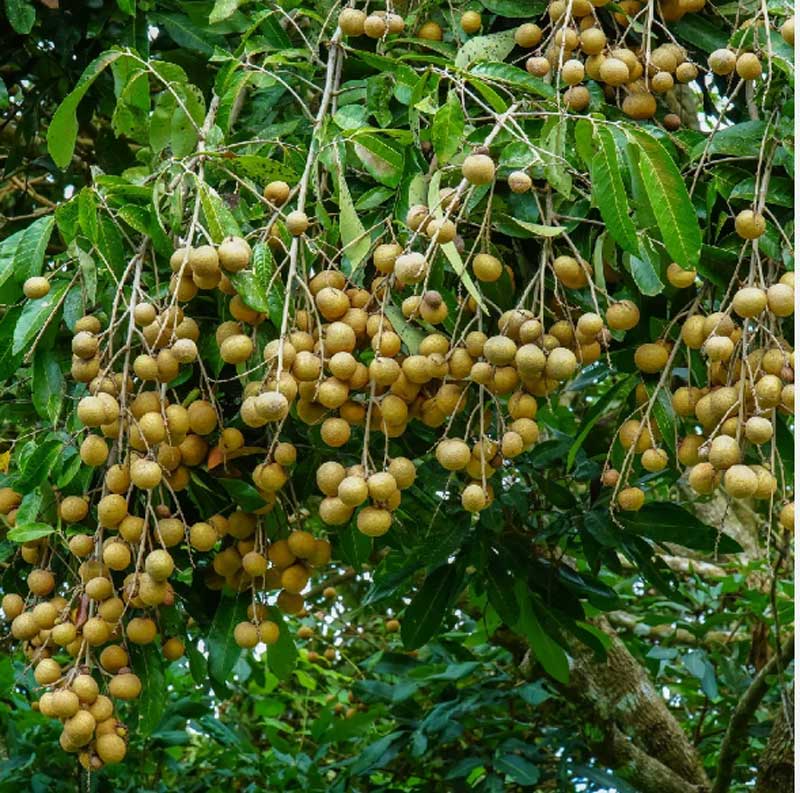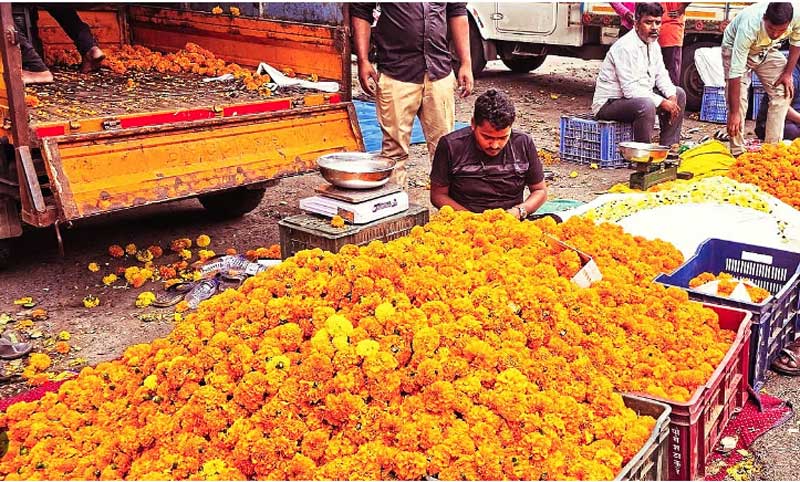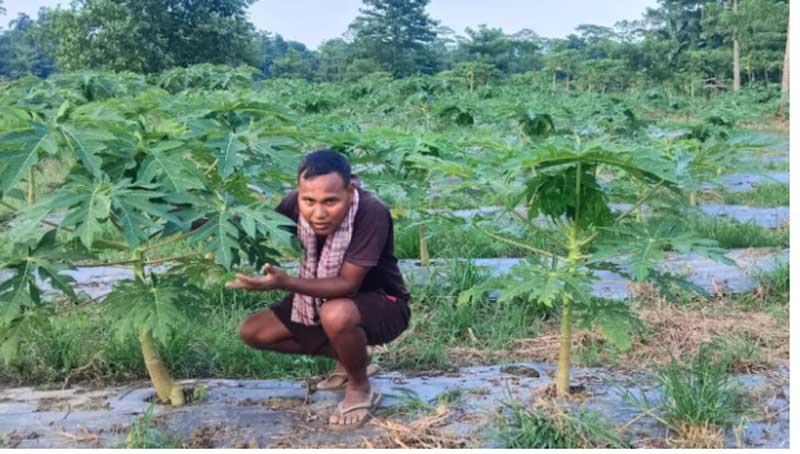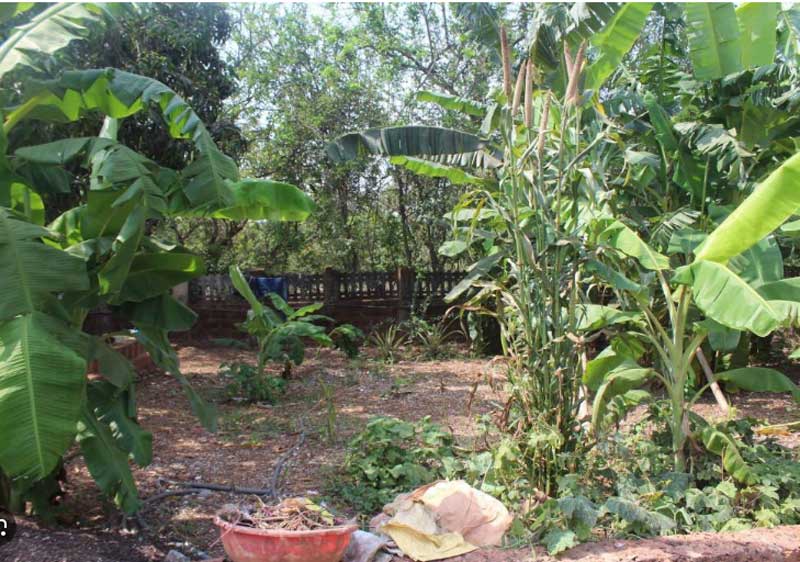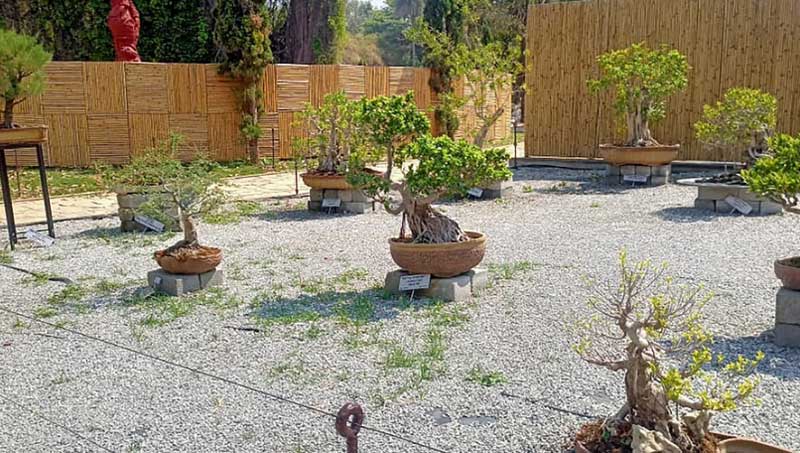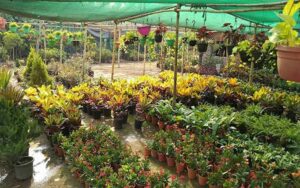An Eco-Friendly and Sustainable Approach for the Management of Diseases in Ornamental Nursery Plants
Madhavan S., D. V. S. Raju and T. Sirisha
Ornamental nursery is a fast-emerging segment of floriculture in India. Ornamental nursery growers not only earn profit but also create employment for youth and women and help in sustainable ecological development and maintenance. Ornamental nurseries have and produce a wide range of trees, shrubs, climbers, annuals and others. Production of quality planting material is a very important criterion for boosting productivity both from a quantity and quality point of view. Planting material is in great demand both for commercial growing, home gardens and landscaping. According to a study conducted by Indian Flowers and Ornamental Plants Welfare Association (iFlora), India’s flower and plant market have the potential to grow tenfold in the next five years.
Rapid urbanization, increase in income levels and changes in lifestyle have resulted in increased demand for ornamental plants in the domestic market. In order to attract visitors and create demand for ornamental plants, growers wish to introduce a different kind of novel plants from all over the world. This very much increases the chance of introducing new pathogens and diseases. Many times, the profit expected by nursery growers cannot be cherished due to devastating diseases. A plant disease is defined as any variation from the normal structure or function of plants or plant parts, sufficient to threaten their life and affect their economic utility. In addition to invasive species, pathogens of soil origin and airborne also infects the roots, stem and foliage of the plants and produce a wide range of symptoms like wilt, different coloured lesions on the stem, spots and blights on the foliage and flowers, thus it decreases the demand and price of the plants and incurs a loss to the nursery growers. The leaf spots vary in size, shape, colour and pattern. All the plants are affected by leaf spots and it affects their ornamental quality. The price and saleability of the nursery plants are dependent on guarding the plants against these diseases. In an urgency to control diseases, nurserymen and growers use the chemicals indiscriminately to protect the plants from infection by pathogens. Chemicals are regularly used to control the diseases of ornamental plants but are no longer considered as they are not environmentally friendly and lead to the development of resistance to pathogens. The demand from the public and the policymakers is that there should not be any compromise to the health of the environment when addressing the plant health concern. The use of biological control agents is the best alternate disease management strategy and their efficacy is comparable to or even better than chemicals it is recognised internationally as an environmental friendly approach for the management of plant diseases.
Biological control is the use of beneficial microorganisms to suppress soil-borne and foliar pathogens. Microbial Biocontrol (MBC) agents protect the crop from damage due to pathogen infection by exhibiting various kinds of action. They are:
i) MBC agents induce resistance or enhance the resistance nature of the pathogens against the pathogen infection
ii) MBC agents compete for space and nutrients with pathogenic organisms
iii) MBC agents invade and kill mycelium, spores, resting structures and cells of pathogens by secreting enzymes, such as chitinases, glucanases, pectinases, etc.
iv) MBC agents secrete antibiotics, toxins and secondary metabolites which are directly toxic to the pathogens and inhibit their growth and development
v) MBC agents produce siderophores which chelate iron, making them unavailable to the pathogenic organisms. In addition to their disease-suppressing activity, they also enhance the growth and vigour of the plants by inducing and secreting growth regulators like Indole Acetic Acid (IAA).
The microorganisms categorised as fungi viz., Trichoderma, Gliocladium, Ampelomyces, Phanerochaete, etc.; bacteria such as Bacillus, Streptomyces, Pseudomonas, etc. and some of the non-pathogenic organisms like Aspergillus, etc., have the potential to suppress the pathogenic organisms and restrict the development of disease in plants. The biocontrol potential of these beneficial microorganisms has been proved against several plant diseases including ornamental plant diseases. The MBC agents work well against the pathogens and disease development in the plants when they are applied prophylactically. They make the plant structurally and chemically sound to fight against the infection of pathogens by inducing various resistance structures and improved vigour. The MBC agents exhibiting good performance against the pathogen in one location may not work well against the same pathogen in another place. The reasons behind the failure may be due to the change in environmental conditions and other reasons which remain elusive. Hence it is always recommended to use MBC agents tested and verified for their potential against pathogens in various locations and under different environmental conditions. The MBC agents formulated in various means such as talc formulation, liquid formulation, paste formulation, capsule formulation and beads formulation, etc. are available commercially in the market worldwide. The MBC agents being recommended to control ornamental plant diseases are listed below.
| S.No. | Biocontrol Agent | Diseases recommended controlling |
| 1. | Trichoderma viride,T. hamatum, T.harzianum, T. asperellumand T. virens |
Soil borne diseases-Wilt, root rot, stem rot, foot rot |
| 2. | Gliocladium virens | Soil borne diseases-Wilt, root rot, stem rot |
| 3. | Ampelomycesquiscalis | Powdery mildew |
| 4. | Bacillus subtilis,B.amyloliquifaciensand B. pumilus | Soil and air borne diseases |
| 5. | Pseudomonas fluorescens,P. putidaand P. aeruginosa |
Soil and air borne diseases |
| 6. | Agrobacterium radiobacter | Crown gall disease |
| 7. | Streptomyces spp. | Soil borne diseases- Sclerotial rot |
Methods for application of MBC agents:
The formulations of biocontrol agents are applied as
i) seed/bulb/cutting treatment
ii) Soil/bedding material application
iii) Foliar application. The dosage for each application method is advised to follow the instructions of the manufacturer.
However, talc-based formulation of bacteria @ 10 g and fungi @ 4 g is recommended to treat a kg of seeds and 5%water suspension of talc formulation is used for treating the cuttings. A talc-based commercial formulation of P. fluorescens @ 20g/pot, B.subtilis and Trichoderma @ 25g/pot is usually followed in a soil application. 0.1% concentration of formulation is generally recommended for foliar spray. These formulations are available at a very low cost compared to fungicides and they work best when used as preventive measures, particularly in potting media of important nursery plants.
Points to be remembered in bio-control management of ornamental plants:
i) The propagative materials should be treated with biocontrol agents before planting,
ii) Bedding mix should be applied with MBC agents at the time of sowing/planting,
iii) MBC agents should not be mixed with pesticides,
iv) The bedding mix should not be drenched with chemicals after the application of MBC agents,
v) MBC agents should be sprayed on foliage prior to the appearance of the disease and
vi) MBC agents can be mixed with other bio-fertilizers.




